My wife and I had often talked about going to Cuba before it changed and this year we decided to take the plunge. The first impression was of having gone back in time. There were very few cars and people were either walking or waiting for buses or hitching lifts. There were very few shops and no sign whatsoever of any advertising. Now that the country is opening to outside influence, this remarkable taste of history cannot be long in the changing.
For us, getting to Cuba involved flying from Dublin to Amsterdam and then back over Ireland again and across the Atlantic via the East Coast of the US to Havana. When we arrived in Havana we had to circle for 45 minutes because of a storm and then had we to queue at immigration for quite some time before getting some of the special convertible currency units (CUCs) for tourists. We then proceeded to our first hotel, the Nacional, which was once, allegedly, run by the Mafia and featured guest stars such as Frank Sinatra. The Nacional looked like it had not been touched since the 1950s. The following day we went on a walk around old Havana (Habana Vieja) where we saw a lot of Spanish style architecture.
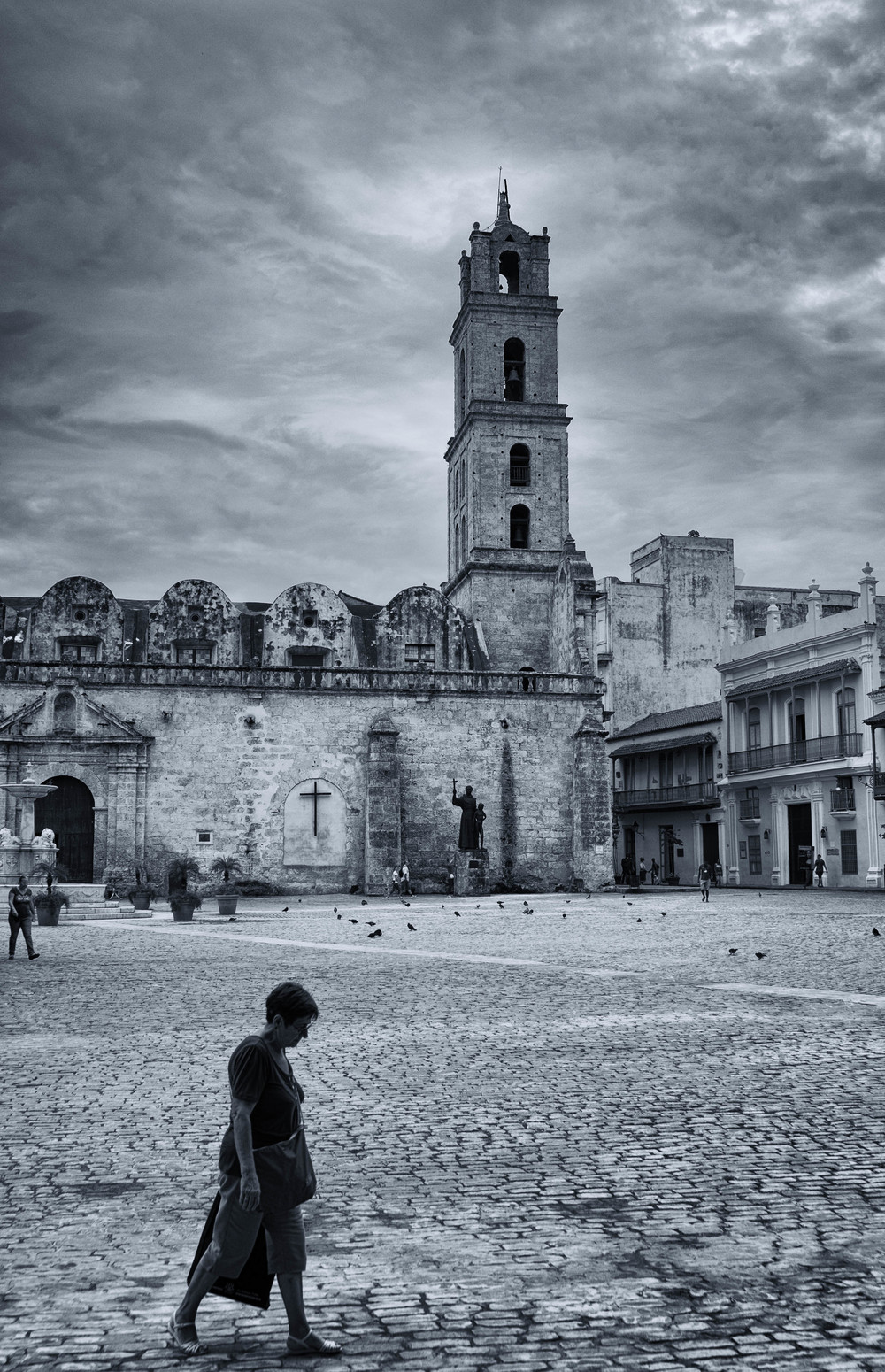
The elegant architecture in old Havana was in contrast to that which we saw on the outskirts which was of the ‘modernistic’ concrete type.
I mentioned the absence of cars, but the old 1950s American cars were immediately noticeable. Some of the owners took great pride in their cars and had them done up very nicely like this one
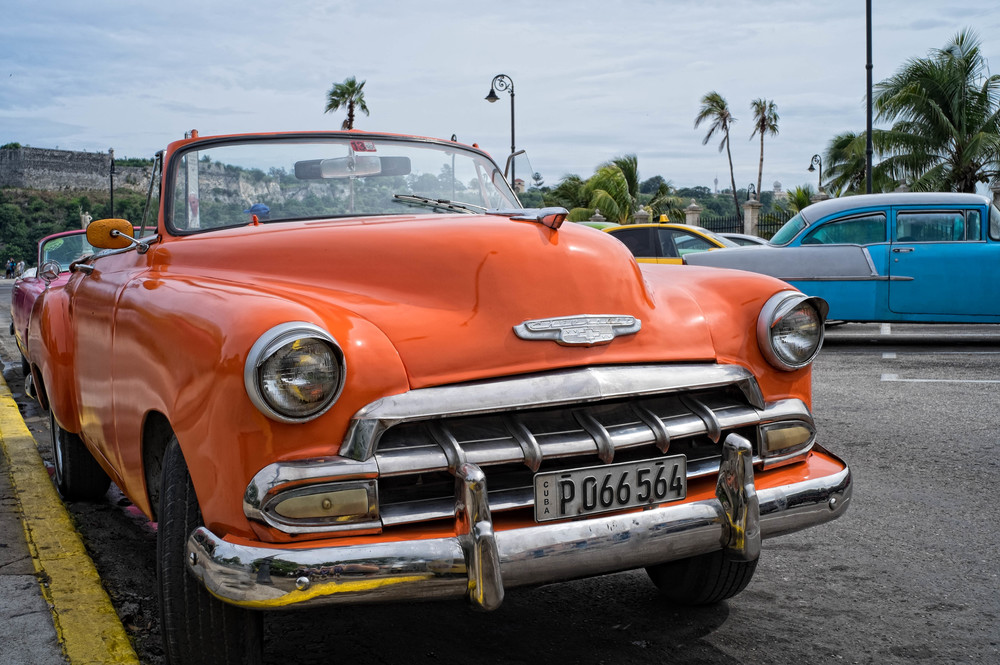
Sometimes such cars had a lot of the mechanical items changed and you could find an engine from a Hyundai in a 1952 Chevrolet. I took several trips in such vehicles and, while they are solid, the absence of ‘modern comforts’ like seat belts was disconcerting. Luckily, most of them did not travel very fast.
After our tour of Havana we went to Vinales, which is at the Western end of the island. It is a rural town beside a national park and has many interesting local features. As we entered the park, this guy appeared on a horse and I felt that he contrasted with the members of our group who were avoiding the mud on the right.
-1.jpg) Horseman, pass by!
Horseman, pass by!
God only knows what he thought of the group ‘invading’ his territory but I thought that I should name this photo Horseman, pass by! after a line in a poem by WB Yeats.
We then went on to a farm which produced both coffee and tobacco. The farmer Geraldo rolled cigars from his own tobacco leaves, while his wife Clara made coffee from the coffee beans grown on their farm. Both the cigars and coffee were excellent.
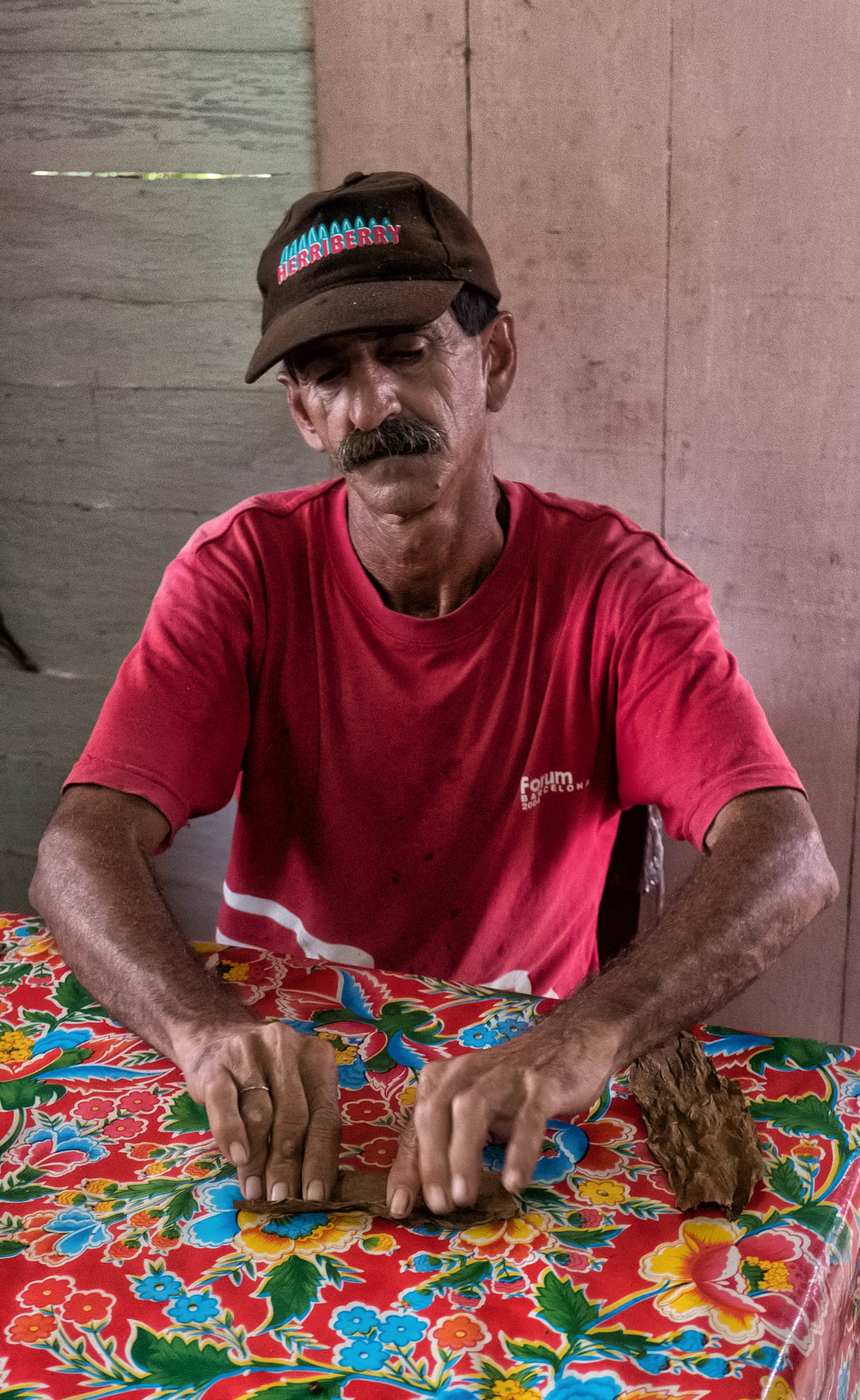
That night we went to a local dance where every one of the local dancers would have won every round of Strictly Come Dancing without much effort. Seeing them dance salsas , mambos and rhumbas, you realized that these dances were very much a part of their local culture which they had absorbed from a very young age. Music is a big part of Cuban life and you see and hear it everywhere. This young guy had just danced across the chairs the ladies are sitting on in a death defying manner.
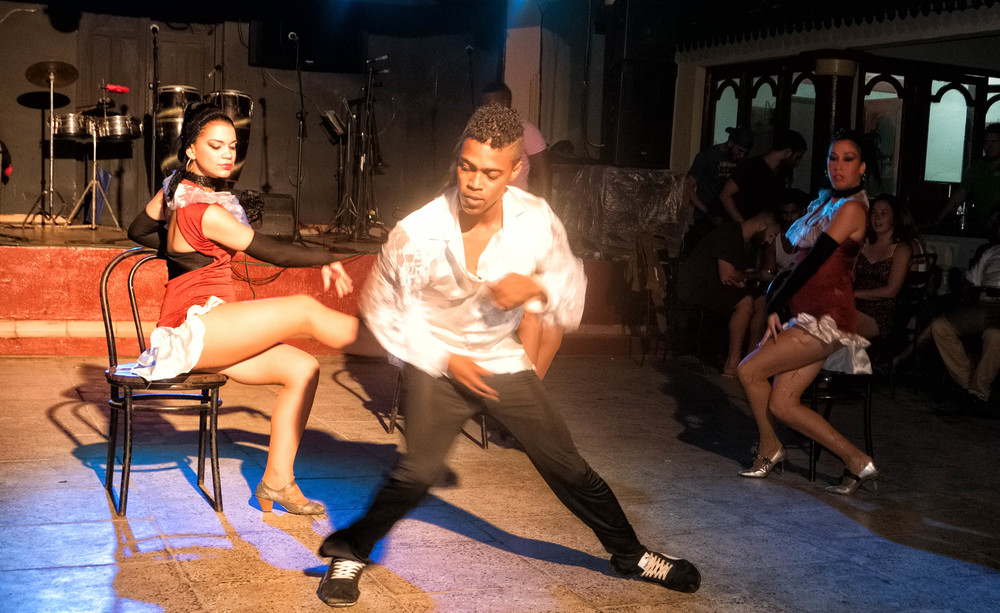
While visiting Vinales, and later in Trinidad we stayed in Casas Particulares. While these might seem at first to be the Cuban versions of B+Bs , they are, in fact, much more than this. All of the rooms have ensuite bathrooms and breakfast is usually taken on a garden terrace. You can have guava juice freshly blended from the fruit picked that morning from the trees in the garden and you can also have dinner made from local produce. In Vinales our host made mojitos which were the best we had in Cuba. I’m not that fond of mojitos as they seem to me to taste of rum and toothpaste but his were definitely the best I have ever had. Staying in Casas Particulares is a ‘must do’ if you visit Cuba.
The street we stayed in while in Vinales was full of Casas Particulares. This photo almost encapsulates Cuba with the American car, the horse drawn vehicle (horses were everywhere in Cuba), the Lada in the distance, the casas and the overhead wires.
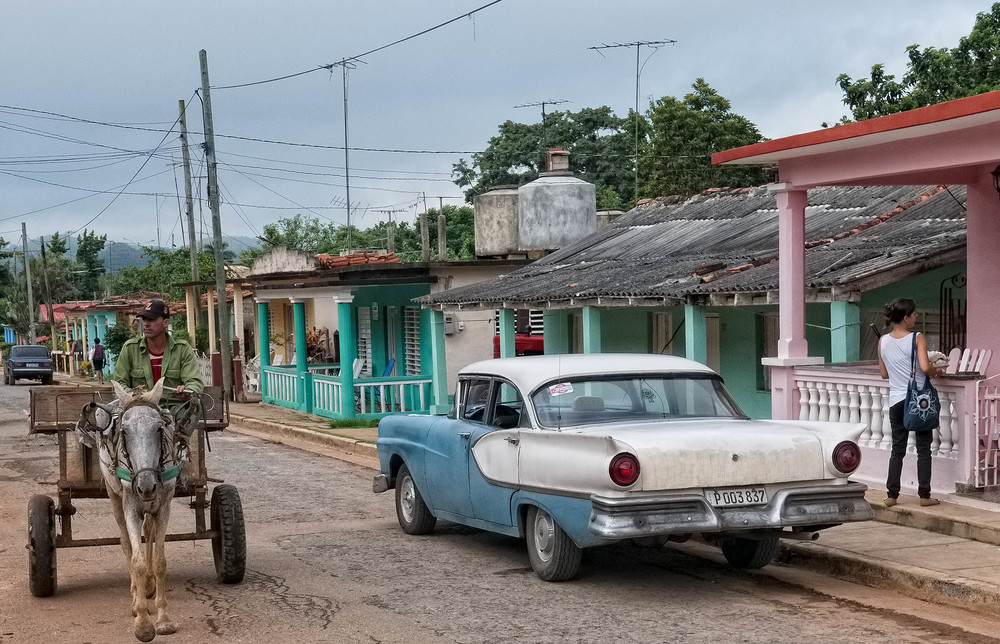
After Vinales we went well over 300kms east to Trinidad which is not to be confused with the island of the same name. Trinidad had a completely different feel to Vinales. One of most immediately visible differences were the cobblestones in the streets and rows of coloured houses in terraces. Again music was everywhere and so were horses. Here the two are combined.
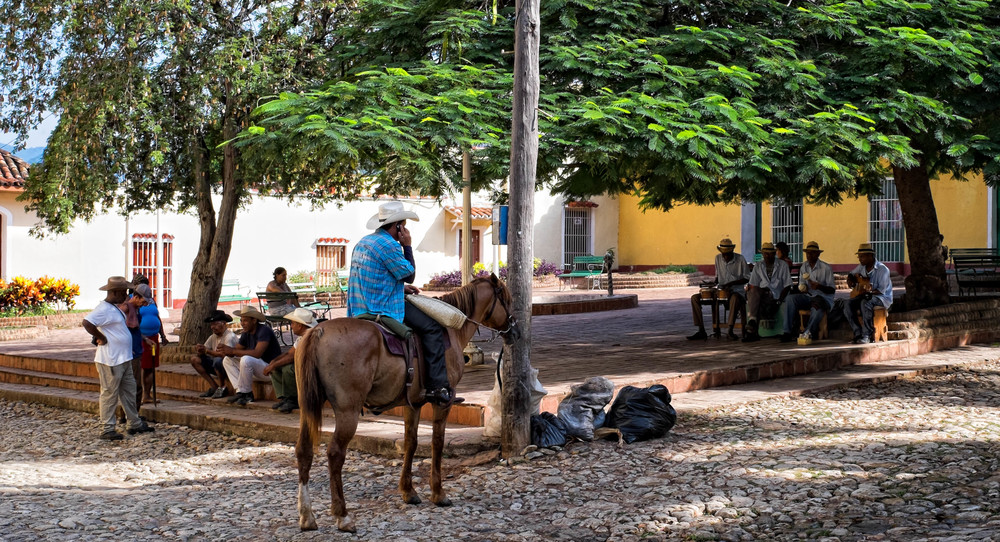
I wonder what the guy on the horse is saying on his phone. Another guy on a horse, we saw soon after this, pulled up outside a shop and hitched his horse to some railings and walked inside. Clint Eastwood would have been jealous.
While we were in Trinidad I thought that our guide had said that we would visit a ‘Russian Shop’ . Perhaps this was a ‘Freudian Slip’ as what we visited was a ‘Ration Shop’. While the interior was quite grim , it was evident that the Cubans accept ‘queuing for a living’ as a fact of life.
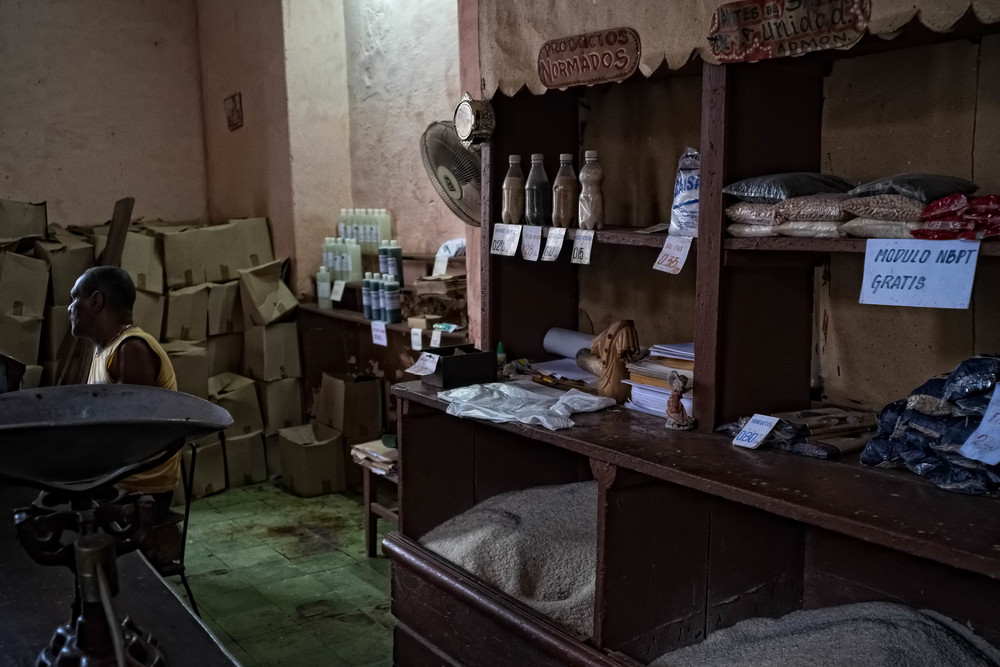
On our second day in Trinidad we visited a local national park where we braved the mosquitos and other insects, including ants that dropped from trees, to walk up to a waterfall. Some brave people swam but I satisfied myself with this photo of the waterfall in the semi-jungle environment.
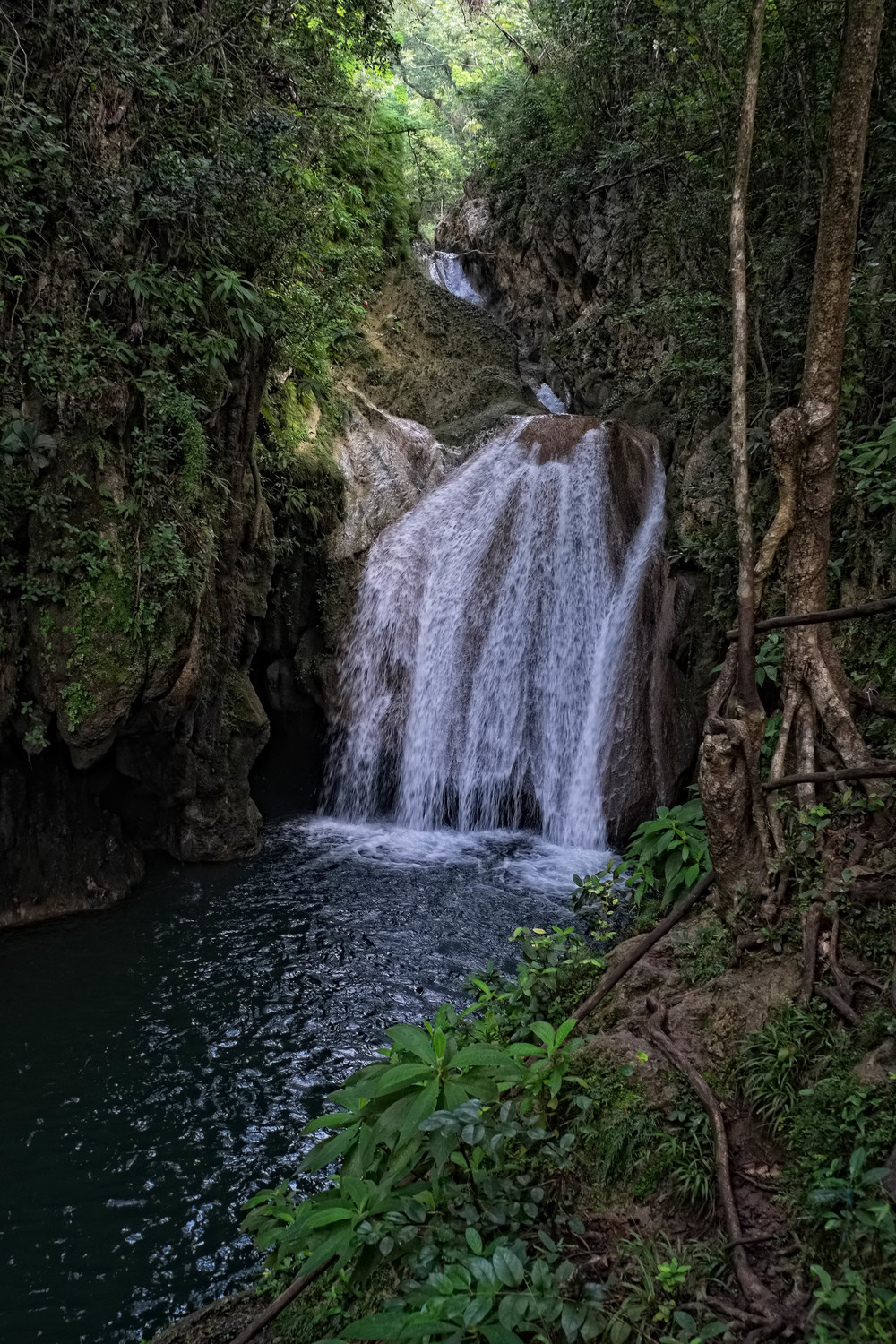
That night we went to an Afro Cuban Show where the music was closer to Africa than Latin America. There are many different varieties of music in Cuba. The most common mixture is between Hispanic and African music. In this case, while the lady danced, the performers sang in the Yoruba language from West Africa.
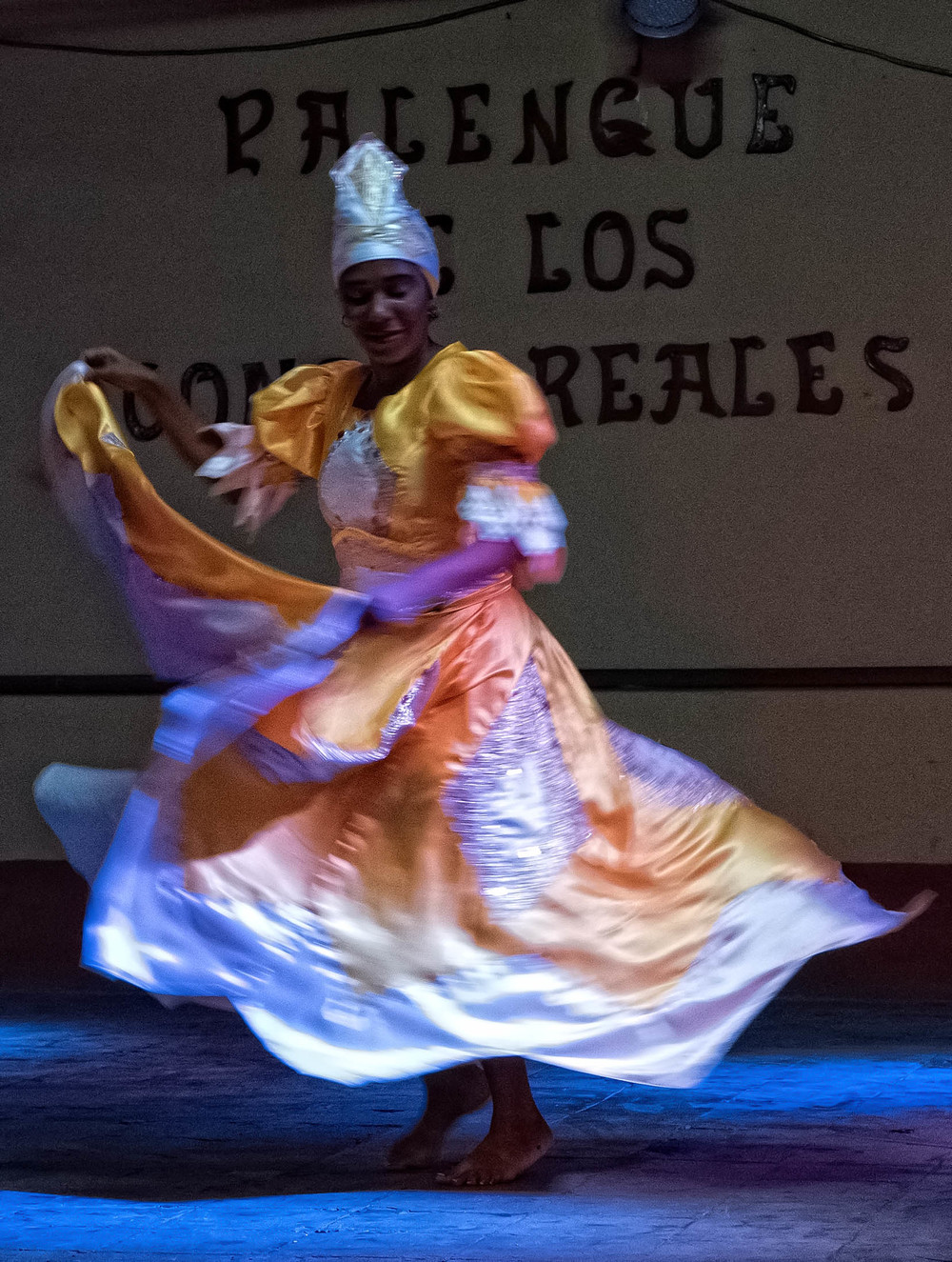
From Trinidad we moved on to Cienfuegos, a city with a completely different character. The main square, Parque Jose Marti contained many fine buildings from the Spanish era, including the Palacio De Gobierno. While we were there a sudden storm arrived with dramatic effect.
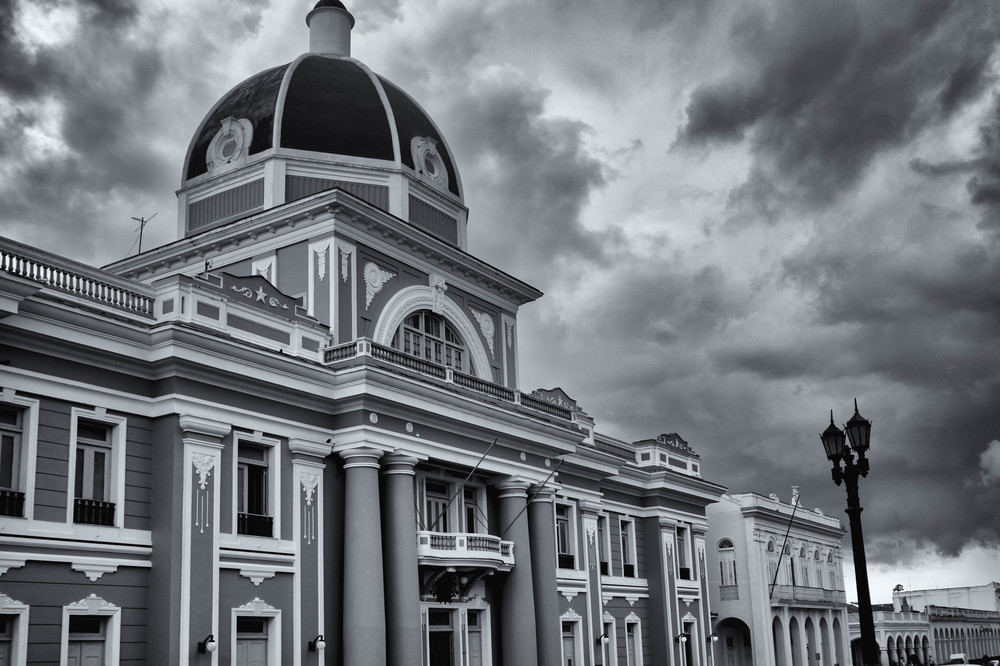
We then went by horse and buggy to visit the famous Palacio De Valle and on the way we saw these 1950s American style bungalows being used as dwelling houses. They were in complete contrast to any other buildings we saw elsewhere in Cuba
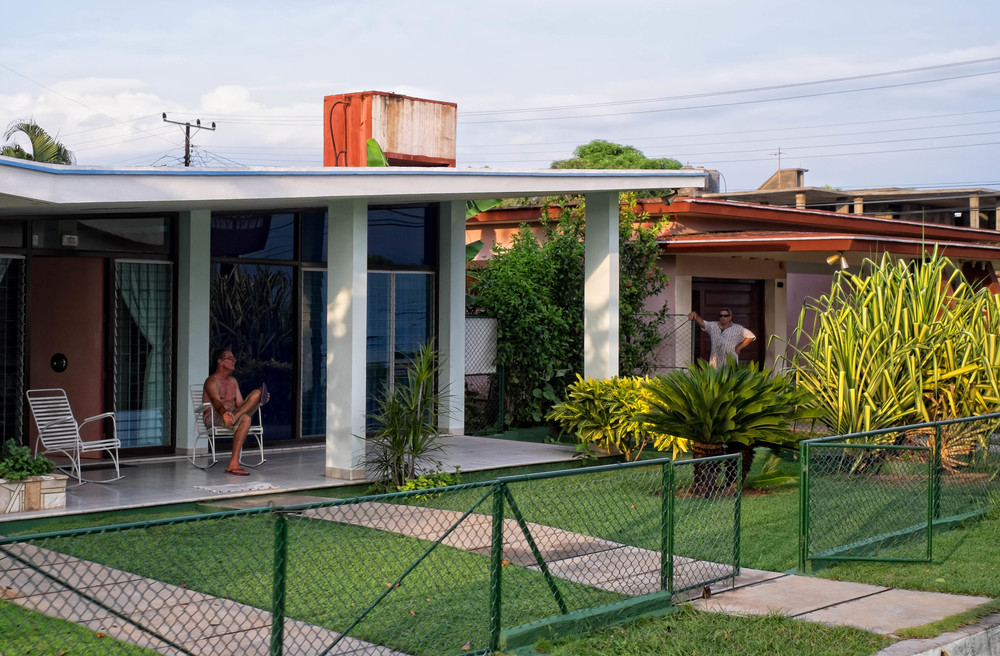
From Cienfuegos we travelled back to Havana via the Che Guevara Museum at Santa Clara. Che is treated with great reverence by Cubans, even though he was not Cuban. When I was young Fidel Castro was the man we identified most as the leader of the Cuban Revolution. After Che died at a relatively young age his profile increased dramatically both inside and outside Cuba. Photography was not allowed in the museum and in some parts complete silence was demanded. We were allowed to photograph the statue outside and I have done some work to convey the image that I perceived he had in Cuba with a little nod towards the famous Alberto Korda photograph. The words beneath meaning “ Until Victory, Always” are to be seen frequently in Cuba
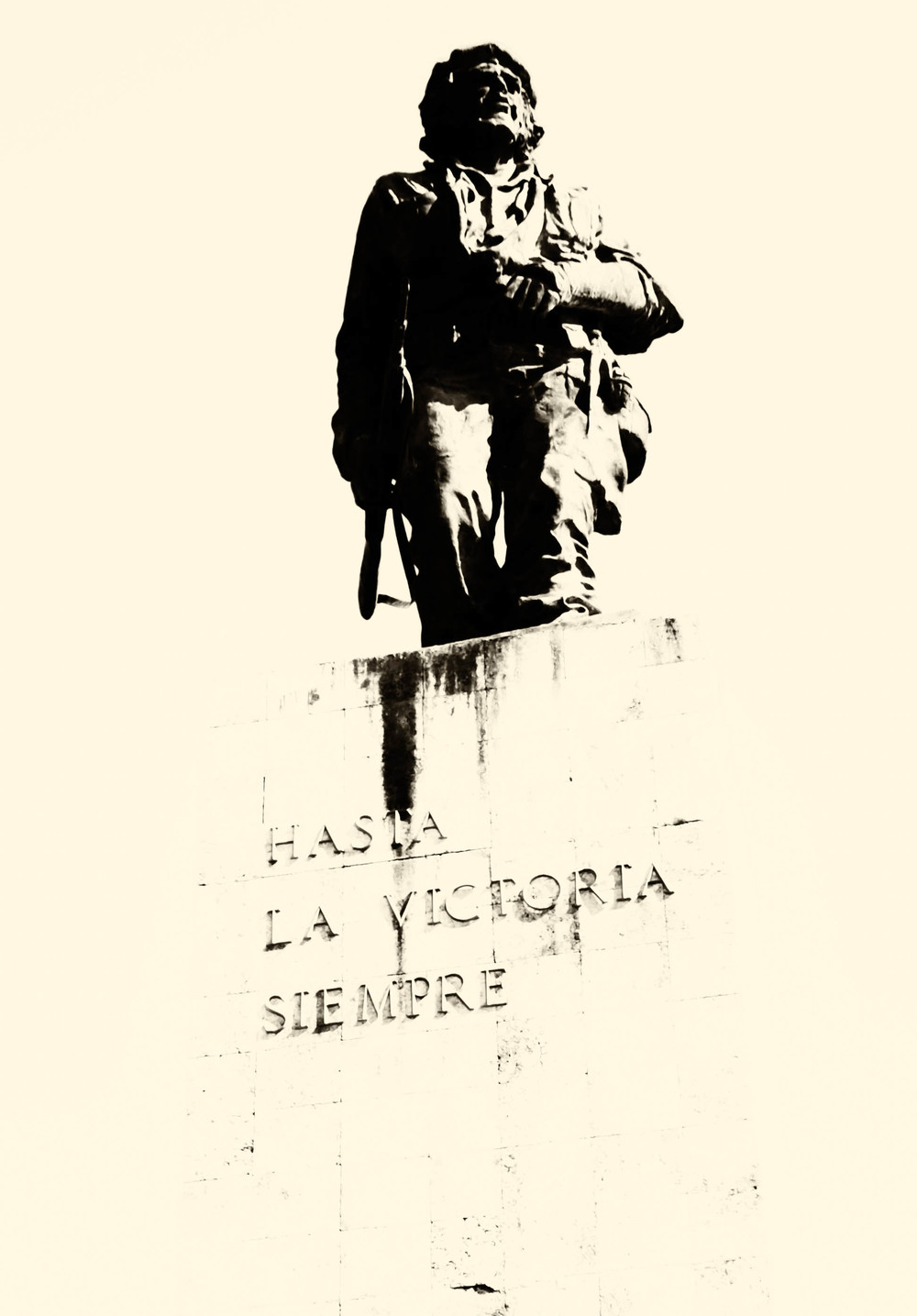
When we arrived back in Havana we had a short time to go out onto the Malecon or seafront as the tailwinds from Hurricane Joaquin brushed the coast. If you look carefully at this photo of an old American car being driven on the Malecon you will see somebody with a ‘selfie stick’ using a Go Pro to video proceedings.
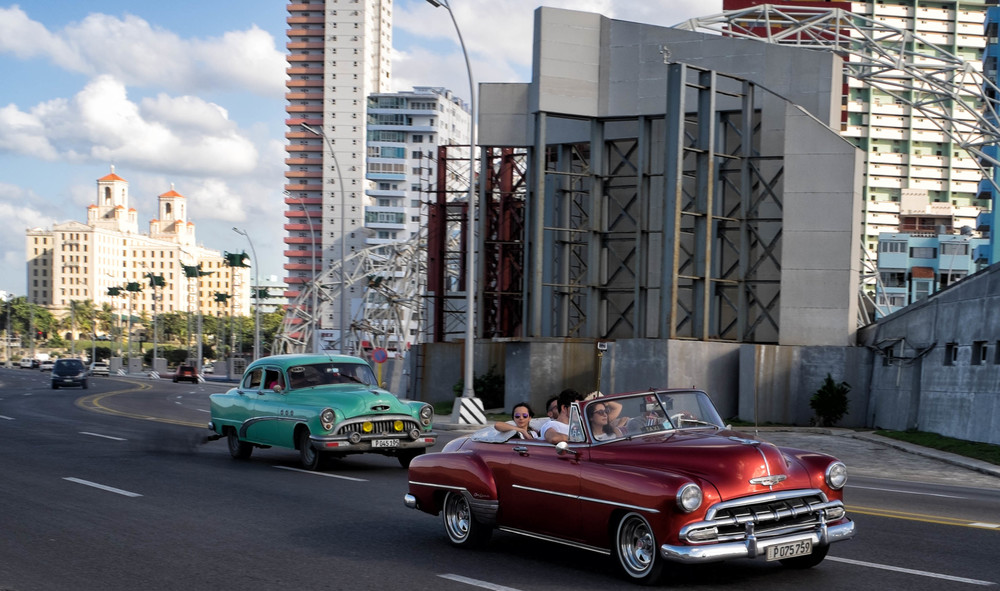
Young Cubans are just as tech savvy as their counterparts in other countries but they often have to go to extraordinary lengths to access online content. There is limited ‘pay by the hour’ wifi available but a common way of accessing online content is the hand delivery of content, including US TV shows, on USB sticks called El Paquete Semanal, meaning ‘The Weekly Packet’. I saw this service being sold from laptops on the side of the street in Vinales. Link here
On our last night we visited a club called the Cafe Taberna which featured music in the style of the Buena Vista Social Club. Once again the music was wonderful and the suit which this elderly singer is wearing would turn heads anywhere in the world, even in Rome or on the Champs Elysee.
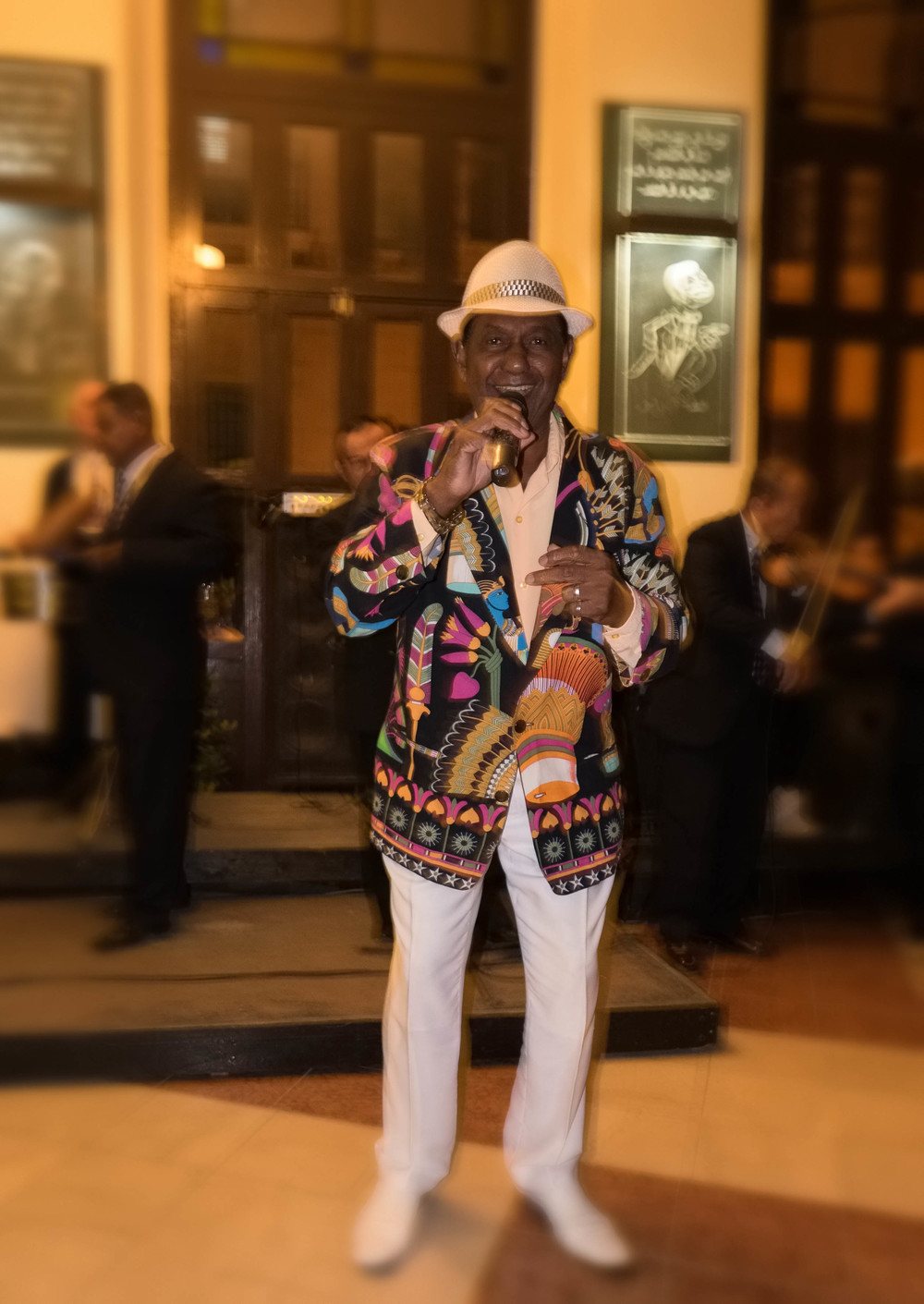
This photo summarizes something about Cuba which lingers in the mind. No matter how difficult things may be from an economic or social perspective, Cubans always know how to enjoy themselves. From our point of view this was one of the most enjoyable and uplifting holidays we have had for many years.
Finally, some ‘boring stuff’ for photographers. The cameras used were the Fujifilm X-T1 with the Leica 24mm Elmar mounted via a Metabones adaptor and a few with the Fuji 18-55mm kit zoom and also the Lumix LX 100 (virtually the same as the Leica D-Lux) . Both cameras performed impeccably, with the only difficulty being manual focus in very bright conditions or when my glasses steamed up due to high humidity.

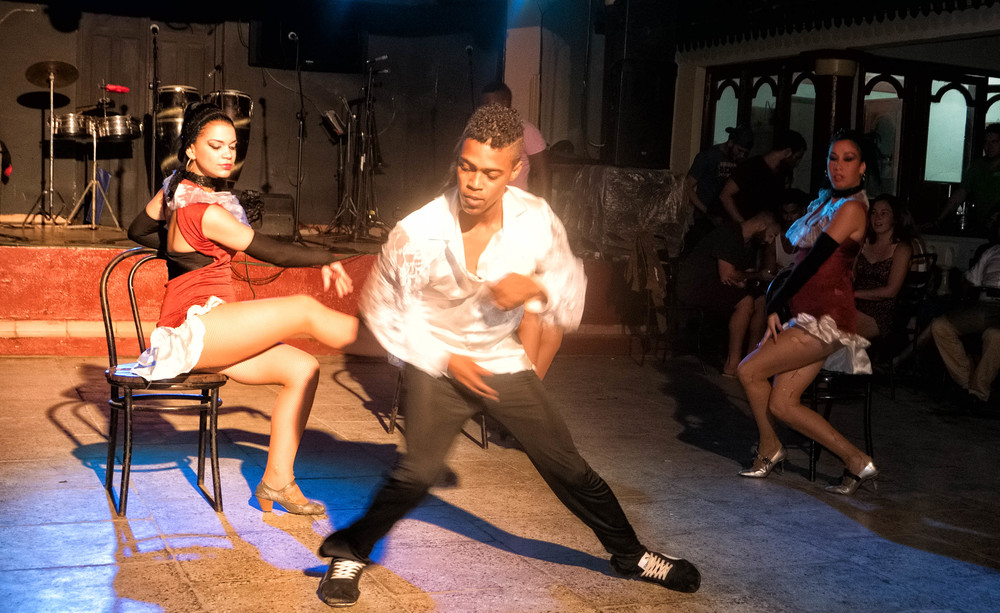
Hi Willie! Thanks for the trip down memory lane. Seems like not a lot has changed since I was in Cuba. Really enjoyed your photos and commentary. Mary D
WILLIE; I ENJOYED ALLTHAT. CARMEL COYLE
You have captured the real Cuba, Well done, that is real photography, the flavour and the story
Terrific photo essay William.
Thank you.
dunk